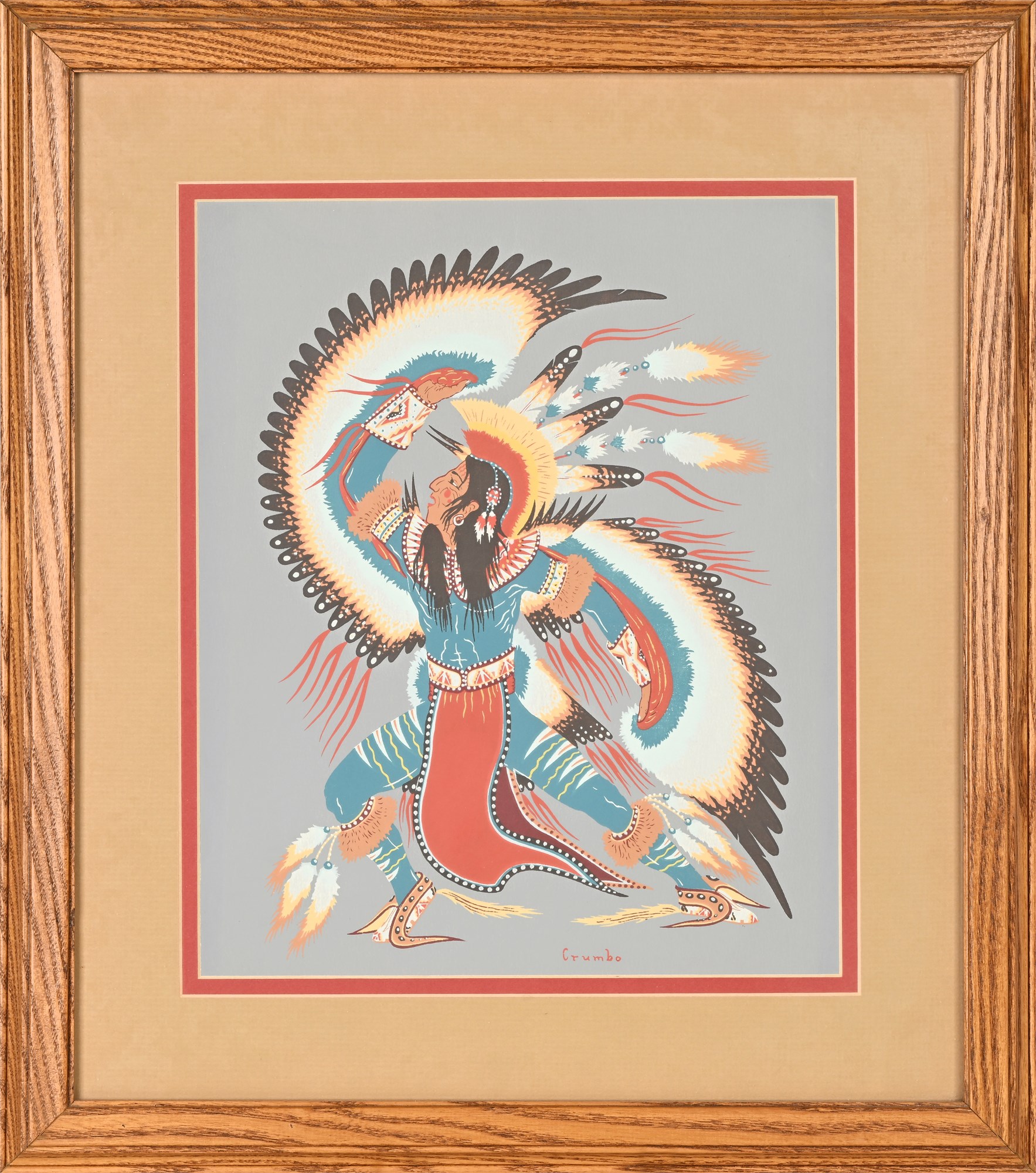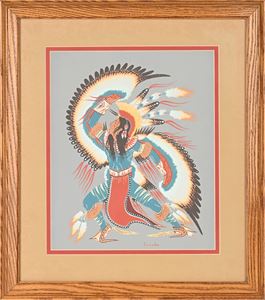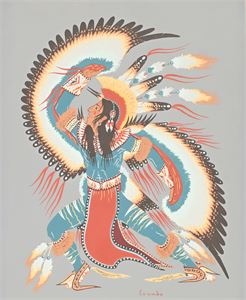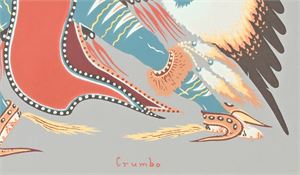Woody Crumbo Serigraph “Eagle Dancer” — Original Screenprint (c. 1946–1952) View Watchlist >
Seller Accepts Credit Cards
Payment and pickup instructions will be available on your invoice (under "My Account") at the conclusion of this auction.
Lot # H706
System ID # 23989781
Start Date
End Date
6 Watching
Woody Crumbo Serigraph “Eagle Dancer” — Original Screenprint (c. 1946–1952)
A striking serigraph by Potawatomi artist Woody Crumbo (1912–1989), titled Eagle Dancer. The composition depicts a Native American dancer in elaborate feathered regalia, arms raised in a dynamic gesture that radiates movement and ceremony. Stylized arcs of black, turquoise, ochre, and red convey rhythm and balance, characteristic of Crumbo’s modernist interpretation of Native traditions. The artist’s name “Crumbo” appears in the screen at the lower right.
Crumbo’s dancer imagery is among his most admired work, reflecting his dual role as both an artist and a performer of Native dances. Produced circa 1946–1952, this print exemplifies his mastery of silkscreen, employing multiple layered screens to achieve luminous tonal contrasts. Today, Crumbo’s prints are represented in major institutions including the Smithsonian Institution and the Metropolitan Museum of Art, and are highly sought after by collectors.
Condition:
Good overall condition, with no damage noted. Colors remain vivid and well-preserved. Presented matted and framed behind glass; frame shows minor wear consistent with age.
Dimensions:
Overall (frame): 17 x 15 inches
Visible image: 11 x 9 inches
Artist Biography: Woody Crumbo (1912–1989)
Woodrow Wilson “Woody” Crumbo was a Potawatomi artist, dancer, and cultural ambassador whose career spanned painting, printmaking, music, and museum curation. Raised among Potawatomi, Creek, and Sioux families, he studied under Oscar Jacobson at the University of Oklahoma before directing the art program at Bacone College and later serving as curator at the Gilcrease Museum and the El Paso Museum of Art.
Crumbo was among the first Native American artists to embrace silkscreen printing, creating vivid, stylized images that brought Indigenous ceremonial life and wildlife subjects to wider audiences. His works are housed in prestigious collections including the Smithsonian, the Gilcrease Museum, and the Metropolitan Museum of Art, affirming his place as one of the foremost Native American artists of the 20th century.




